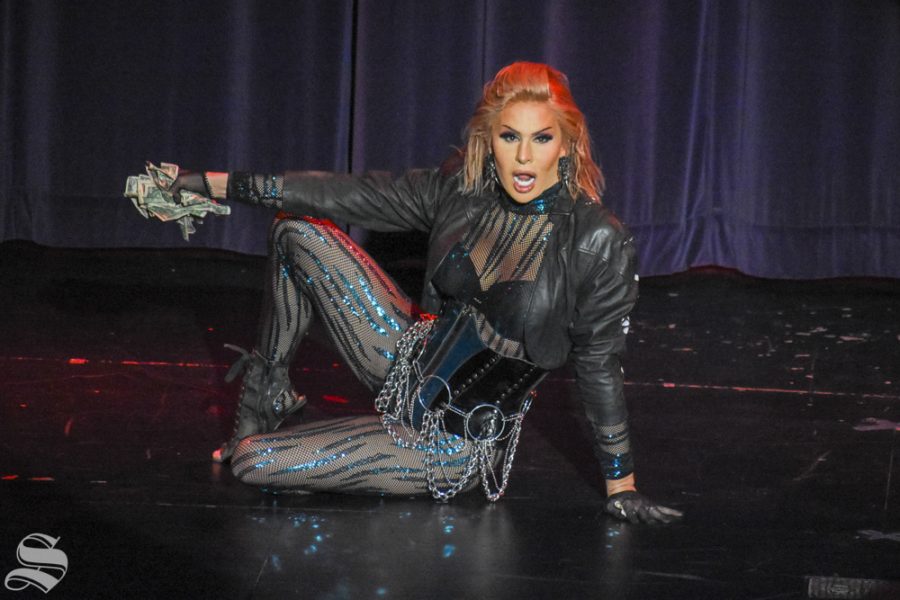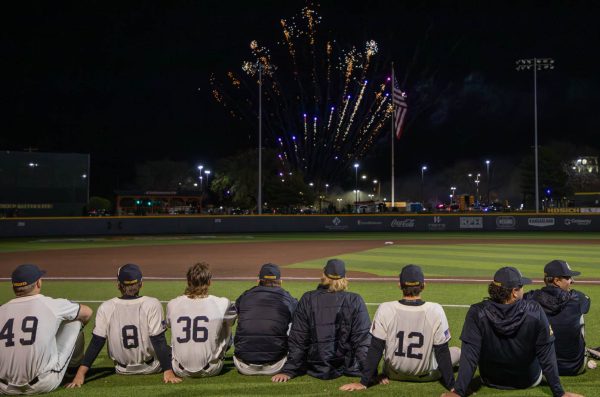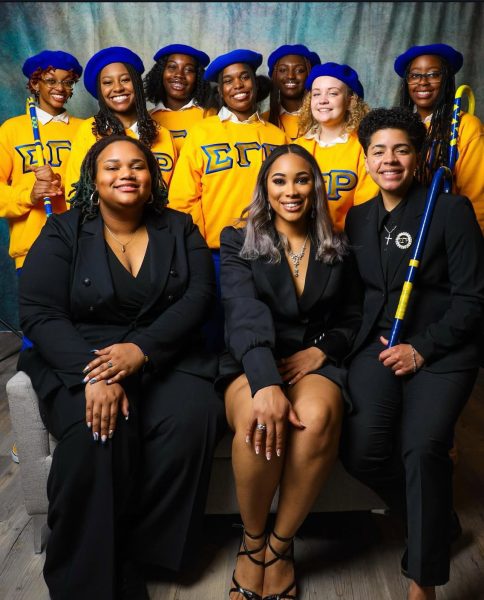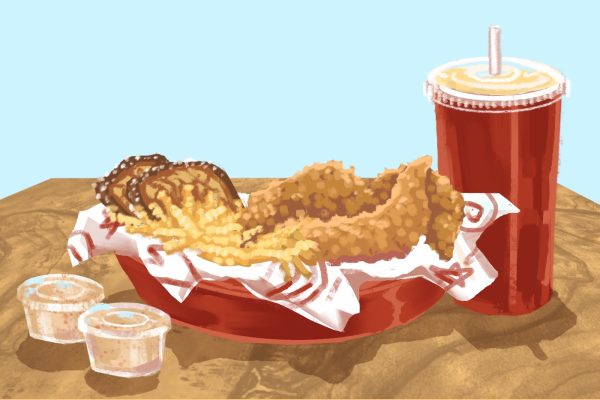Get those respectability politics away from my drag
Trinity the Tuck performs her opening dance routine during the 10th Annual Drag Show on Friday, Nov. 15 in the CAC Theatre.
One of the more memorable moments to come out of RuPaul’s Drag Race is when beloved drag queen Latrice Royal, acting in a prison sketch, says with impeccable timing and total commitment, “get those nuts away from my face.”
I harbor similar feelings towards the respectability politics that have infiltrated drag.
It frustrates me that the mention of that show seems to preclude any discussion of drag as an artform yet it has amassed a majority share of what could be called drag’s market value. It is unavoidable.
Rupaul’s Drag Race, Rupaul himself, and the swarm of celebrity queens the show has proliferated embody what I want to talk about: a version of drag that is oxymoronic and antithetical to drag in its indispensable form.
Drag that is ahistorical in the sense that it does not honor its transgressive roots in ballroom culture or the trans women of color who gave drag its lifeblood, but rather panders to the assimilationist goals of the Gay Rights movement. Drag that is artistically worthless in that it sanitizes itself, simultaneously taking itself too seriously and not seriously enough. Betraying its value as camp and failing to achieve legitimacy in any other aesthetic sensibility.
At the heart of drag is an audacious claim to dignity on the part of those denied dignity – gender non-conforming people assigned male at birth. Drag is about those people who are patriarchy’s favorite laughing stock – feminine “men” – insisting on taking themselves seriously and by communicating that seriousness by way of the equally ridiculed aesthetics of popular culture. Drag is not good art. Yet in its combination of vulgarity and earnest self-esteem, even thematic ambition, it is a major addition to the canon of camp, and more importantly, an intangible cultural heritage belonging entirely to the queer imagination.
Deviance, that reviled state of being a man that acts like a woman, is at the heart of drag as a concept and is the historical foundation of drag as a practice.
Drag is only a satisfying art form when done in earnest, in which case it constitutes a substantive contribution to camp aesthetics. When done ironically, by which I mean in a mainstream context devoid of its inherent deviance, drag is a hollow and pretentious undertaking.
Any incarnation of drag divorced from deviance, that has as its goal assimilation, ceases to be drag. Drag must be in opposition to the world of cisheteropatriarchy.
Thus drag’s ultimate aspiration is its own irrelevance. The queering of the broader culture into a place where dressing up and lip synching is not a prerequisite for self-asserted dignity, but a natural result of inalienable dignity. Where cross dressing is an impossibility in a broader culture that does not instill gender presentation with the false dilemma of an irreconcilable binary.
Subsequently, the moment a drag queen becomes a celebrity she ceases to be a drag queen but has become an agent of assimilation whose only hope of sustained celebrity is a mercenary pandering to respectability.
The very definition of queerness necessitates a way of being that is outside respectability. So what it is to be queer will change with time, but every society will designate some way of being as queer.
The future of drag is there – on the frontier of respectability.

Jeromiah Taylor is the former Opinion Editor for The Sunflower. He has served in this position since the Spring 2020 semester. Jeromiah has an overarching...









